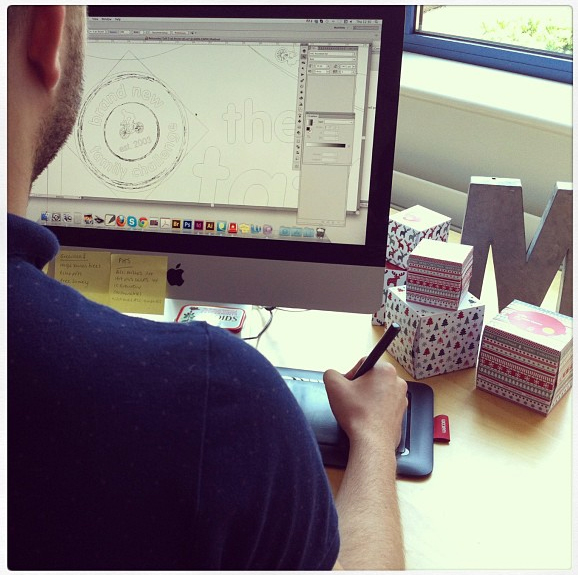Student > Graduate > Junior
Written by Rose-Innes Designs on 26th June, 2013
It’s that time of year when the creative industries welcome fresh graduates keen to enter the working world of design. I, Matthew, thought it was an appropriate time to reflect upon both my time at Rose-Innes Designs and the main differences between university life and work life. You might find a pearl of wisdom if you read hard enough.

Lesson 1: Time
Time is everything to a successful design studio. The first major shock to the system is how much is expected of you in such a short space of time. Unfortunately, the working world is not like year one of university, you don’t have 17 weeks to make one poster (that you begrudgingly did last minute the night before the deadline!). You have to evaluate your work quicker and reach an outcome without compromising on the thought process.
You soon learn that time is valuable. Clients are charged by an hourly rate, so they’ll want the job done in as little time as possible. Here at Rose-Innes Designs, we use pen tablets instead of computer mice – they help us to work that little bit faster. I would definitely suggest investigating pen tablets. I was like Bambi on ice when I first used one, but now I wouldn’t rely on anything else.
Lesson 2: Clients
I’ve not long mentioned it, so good timing to talk about the C word… Clients.
The interaction you have with a client is something that is almost completely missing from the university experience. (You virtually just accept that for 3 years you’re happily working for imaginary people.)
They may not always approve your work straight away or appreciate the lengths you’ve gone to, but clients are there to please; they are the ones paying you, remember! Learn to be approachable and showcase your personality. It’s a two-way relationship. Work aside; you have to be someone worth returning to. Having a great telephone manner will be invaluable. Plus, it gives you a chance to use your posh phone voice!
Lesson 3: Briefs
Projects at Rose-Innes Designs are from real people asking for real design and they’re using a real budget. Thinking back to university when I was dealing with whacky briefs, at first, seemed much more (for the lack of a better word) fun. But university projects are intended for you to enjoy yourself whilst learning all the appropriate skills needed to cope in a studio environment, without the stress or complications of sticking to a budget or a production timescale.
Now you’re delivering design that will help people make money, promote their skills, attract attention to their business… whatever it may be, you’re providing a service that is needed. We’re not quite firefighters, but surely graphic designers are the next best thing, no?
The above were three adjustments that I think were the most important to have made from university graduate to junior designer. At the other end of the spectrum, what advice would I give myself when starting university? Good question… There’s a lot of stuff I would have appreciated knowing, but here’s my top seven things:
1. Learn short keys: I’d definitely tell myself to get stuck into the Adobe software more than I did. I can’t recall the number of times I’ve said, “I didn’t know you could do that!” since uni. Short keys are your friends. Make yourself popular!
2. Be prepared: Familiarise yourself with junior designer vacancies, noting the criteria and skills that are being asked of you. Work your butt off and graduate knowing you have the ability and knowledge to tick all the boxes in an interview.
3. Have confidence: A bit corny, but believe in your own talents. If you have weaknesses, sort them out. But make sure you acknowledge your strengths. Remind yourself you were good enough to be on the course and get a grip!
4. Construct a portfolio ASAP: I was too scared to create a portfolio at first because I knew it would be judged. Be open about your work. Ask for feedback and whether it be good, bad or just plain rude, take it for what it is.
5. Learn to print: If you come away from university knowing just one thing, make sure it’s how to send a piece of artwork to print properly. An understanding of print will be such an advantage in a studio environment.
6. Proofread: Check your spelling. Even if you’re the best speller, you’re human and mistakes will be made. Proofread everything. Friends and colleagues will happily point out where you’ve gone wrong – but you’ll thank them for it.
…And finally, 7. Get involved: It’s never too early to start networking. I look back and can remember thinking ‘There’s no point going to that networking event, they won’t take me seriously.’ When I should have been thinking, ‘Surely the professional designers will be somewhat impressed I’ve shown up. I’ll look dedicated and serious about working in the design industry. I might even get a work placement out of this!’